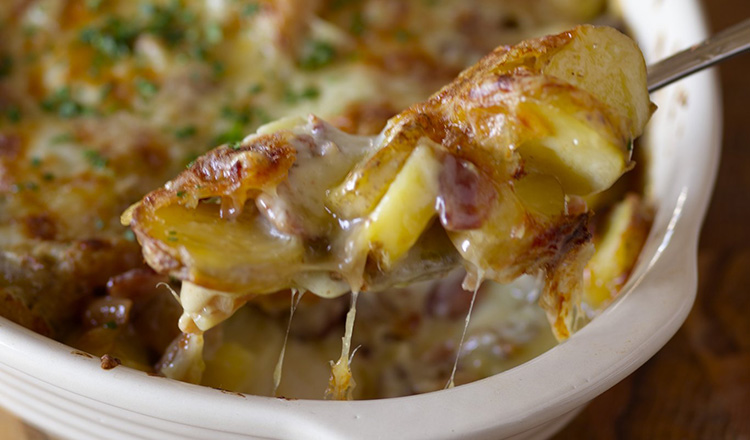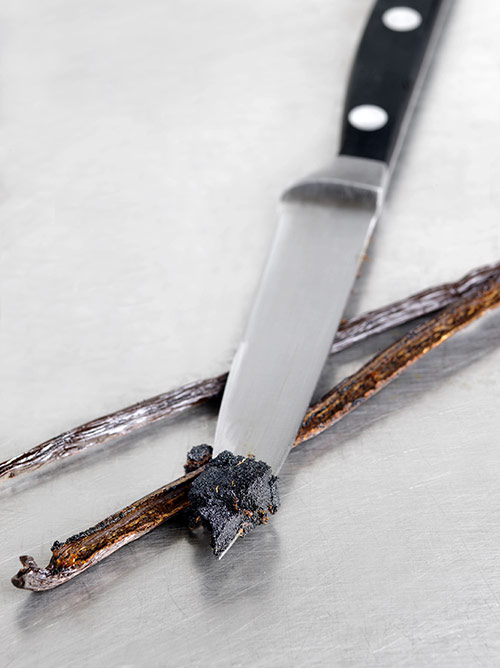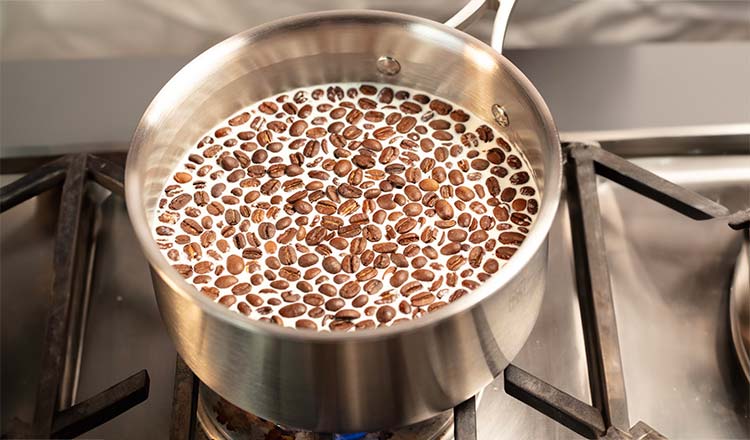Some of the most decadent and delicious dishes we all love are milk-based. Scalloped potatoes, macaroni and cheese, mashed potatoes, ice cream! All are flavored or fortified with a heavy pour of milk, cream, and/or butter. And while a creamy sauce is sort of perfect already, the most fool-proof way to take it to the next level is through steeping.
In food, steeping refers to soaking a flavoring ingredient in a hot liquid to infuse that liquid with flavor. Because a lot of these ingredients, like aromatics, spices, and herbs, are fat soluble (meaning, their flavors are released in fats better than--or, at least, in addition to--other mediums, like water), we often look to milk or cream to act as the vehicle for these ingredients. Infusing the base liquid in a recipe, as opposed to adding them chopped or ground, creates a lighter, more subtle flavor that is uniformly distributed throughout the dish.
To steep milk or other dairy or dairy-substitutes, the process is easy as 1-2-3.
- Bring your milk to a simmer in a saucepan.
- Remove it from the heat and add your ingredients.
- Cover the pan, and let it rest for about 10 minutes.
At this point, you can taste the liquid and see if it's flavored to the level you intended. If it's ready, you can strain and carry on with your recipe. If it's not, let it rest for another 5, 10, or 15 minutes until you're happy with the results.
Ingredients that are commonly used for steeping savory recipes, like mashed potatoes or macaroni and cheese, might include:
- Garlic, which can be smashed and tossed into the pan without peeling. Fresh ginger can be used in the same way, with or without peeling.
- Other alliums, like onion, shallot, or scallions
- Spices, which should be added in whole form, lightly cracked, to avoid grittiness
- Herbs, especially fresh, which can be added whole or in bunches. Thyme and oregano are both subtle in flavor, but rosemary and sage will dominate, so use them sparingly.
Ingredients that are commonly used for steeping baking and pastry recipes, like ice cream or crème brûlée, might include:
- Coffee can be added as whole beans or coarsely ground. If using whole beans, they will release flavor more quickly if they are cracked first, either in a food processor or with the back of a knife.

- Herbs, especially fresh, can be very complimentary to sweet recipes. Mint, rosemary, and lavender are classic choices, but don't be afraid to experiment with more savory flavors.
- Spices like cinnamon, nutmeg, and cardamom, are familiar, but we love looking to other warming spices that you might find in Indian or other Asian cuisines, like star anise, coriander, and turmeric.
- Vanilla beans are already showcased in lots of baking recipes, and for good reason. To steep a fresh vanilla bean, use a paring knife to score it down the center legnthwise. Use the back of the knife to scrape out the seeds (they can go right in the milk), and then drop the pod in to get every last bit of flavor.
In terms of quantity, a little bit goes a long way, so start small. For 2 cups of liquid, a teaspoon of spices, a few sprigs of herbs, or a few garlic cloves are all you need to make a big impact. If you're using this milk for a recipe, be sure to remeasure it after steeping and add more milk to top it off. Some volume can be lost during simmering and straining.


